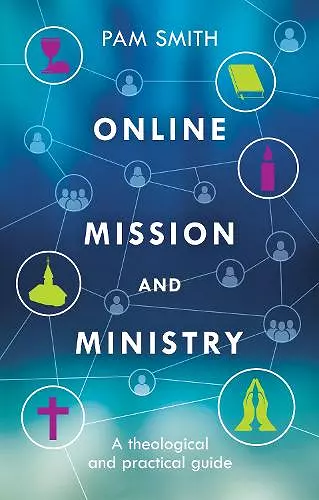Online Mission and Ministry
A Theological And Practical Guide
Format:Paperback
Publisher:SPCK Publishing
Published:19th Feb '15
Should be back in stock very soon

Practical resource to prepare young people for confirmation - covers Christian basics and issues relevant to young people.
A user-friendly guide to doing ministry and mission online for existing and new practitioners.Clergy and churches are increasingly being encouraged to use the internet and social media to promote their ministries. But they may worry about some of the difficult pastoral and theological issues that can arise online. 'Virtual vicar' the Revd Pam Smith guides both new and experienced practitioners through setting up online ministries, and considers some of the questions that may arise, such as: - Are relationships online as valid as those offline? - Is it possible to participate in a 'virtual' communion service? - How do you deal with 'trolls' in a Christian way? - What is appropriate for a clergyperson to say on social media?
'A pioneer in her field, the Revd Pam Smith offers an excellent guide to the theological and practical concerns of online worship, fellowship and spiritual direction. From first-hand experience, she gives the reader both a theological rationale and practical wisdom for conducting online ministry. Examples of liturgy for "virtual" services, guidelines for creating safe online community and principles for online team ministry are all included in this helpful book. Highly recommended!' -- Maggi Dawn, Associate Professor of Theology and Literature, Yale Divinity School
'Pam Smith has an enthusiasm for sharing the gospel of God rather than worshipping technology. She challenges those who fear online ministry, both theologically and with practical advice, identifying opportunities and areas that need respectful thought. In order to meet people where they are - online - Pam emphasizes the need for resilience in our own Christian development, and highlights quality interactions over quantity. I recommend it to all who are interested in or involved in online mission and ministry.' -- Dr Bex Lewis, Research Fellow in Social Media and Online Learning, The CODEC Research Centre for Digital Theology
'If it is serious about ministry and mission the Church needs to be present in each culture's conversation spaces, listening with care, learning with humility and speaking in quiet confidence. In Online Mission and Ministry, Pam Smith makes a compelling case for living and sharing online the great story of Jesus. The author suggests that digital space may prove to be a particularly "thin place" in which the Christ is encountered through conversation, participation and community. Insightful, practical and inspiring!' -- Ian Adams, poet, writer and digital creative author of Unfurling, and creator of Morning Bell, a digital journal and blog
'As the bishop with the pastoral responsibility for i-church, it has been a great privilege to work with Pam Smith over the years. Her book is a wonderful distillation of the wisdom she has gleaned by being at the forefront of these developments and I warmly commend it to you.' -- The Rt Revd Colin Fletcher OBE, Bishop of Dorchester
'Pam Smith has been at the forefront of the critical relationship between the Church and the internet and social media in the UK, and this book shows why. Read it if you want to think and do more about social media and mission and ministry.' -- The Revd Canon David Male, Director of the Centre for Pioneer Learning, Ridley Hall, Cambridge
ISBN: 9780281071517
Dimensions: unknown
Weight: 197g
144 pages